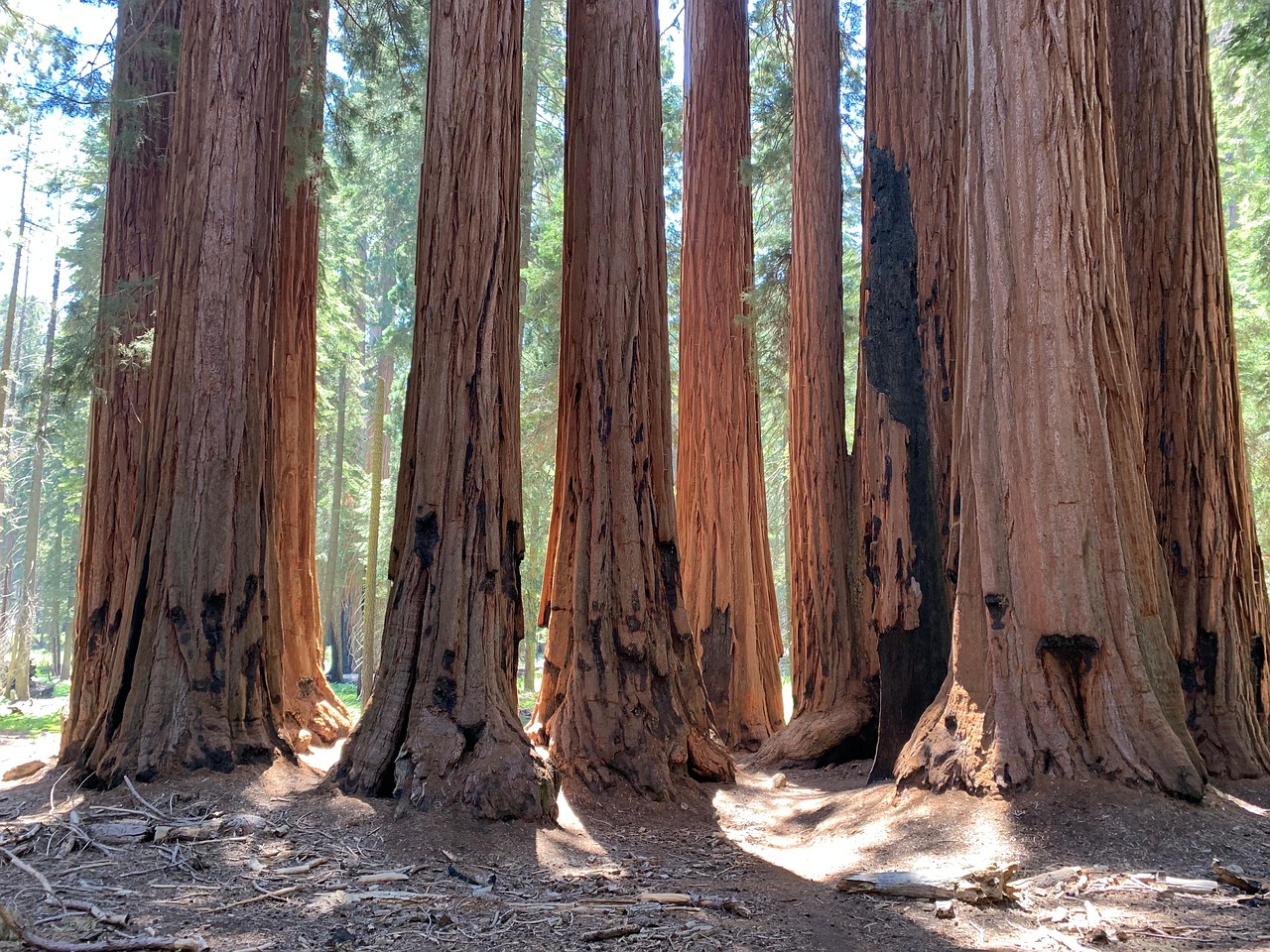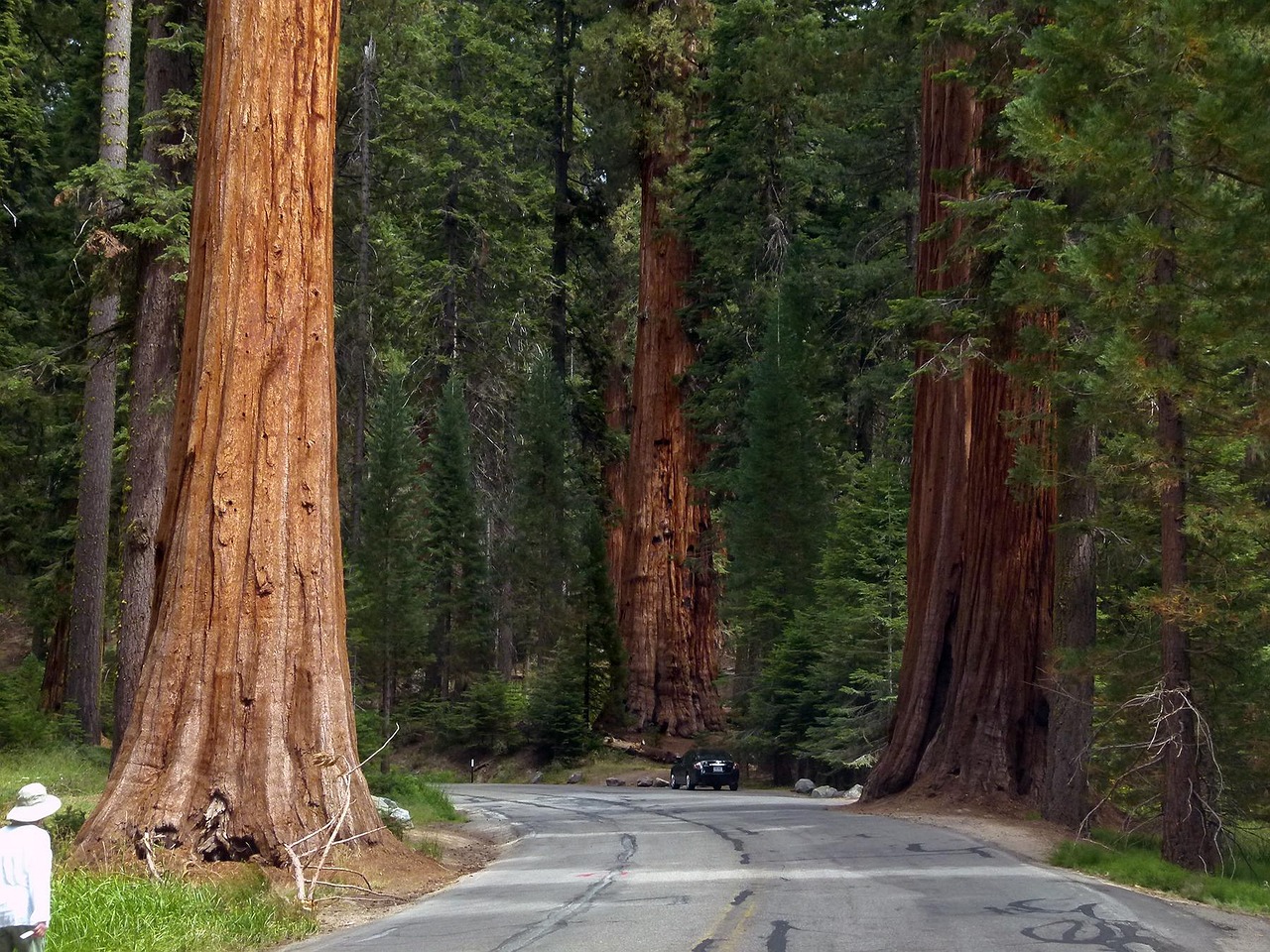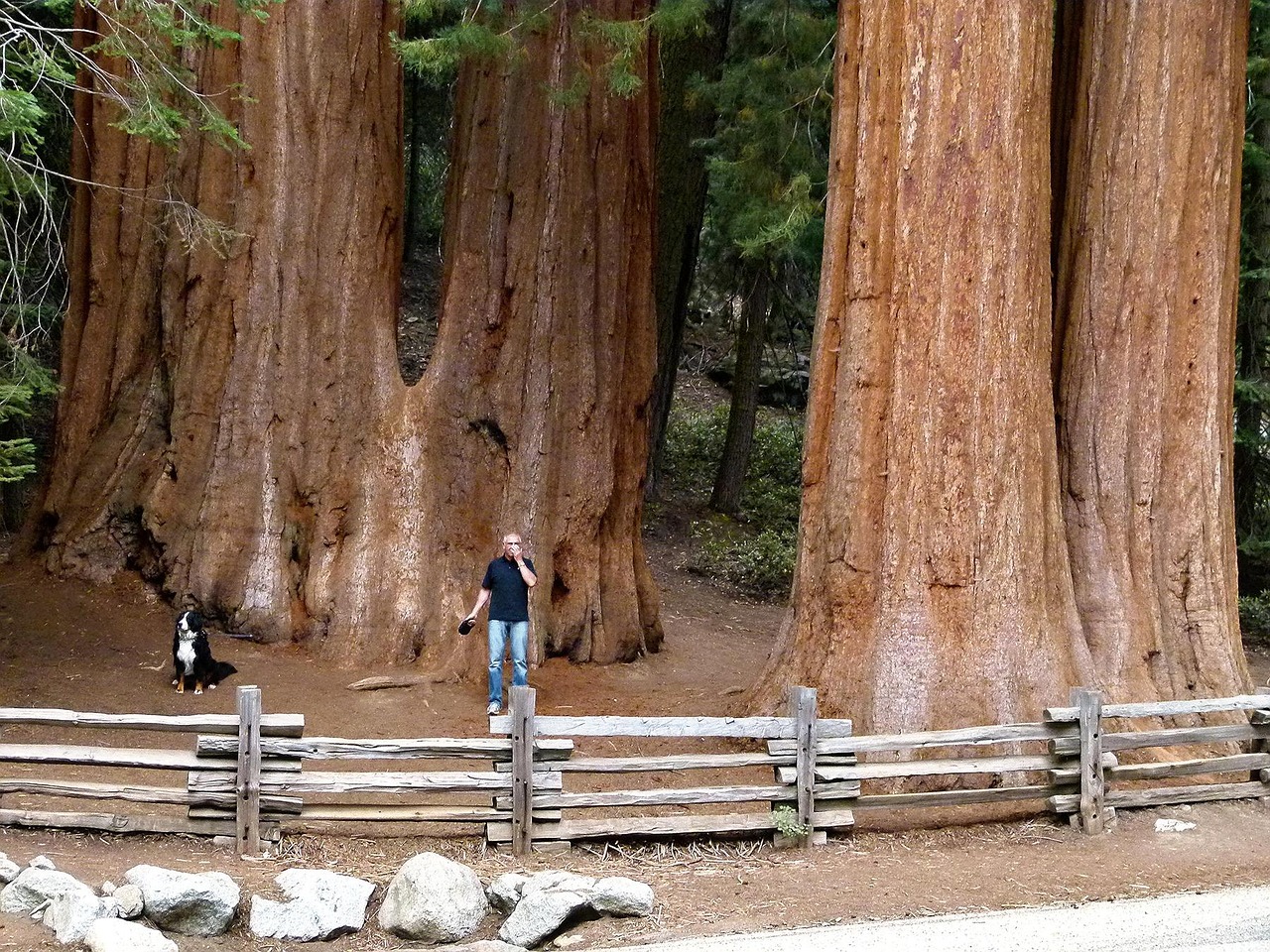Sequoia trees are among the fastest-growing trees, particularly in their native habitats. They can grow up to 3 feet per year during their early years, with mature trees reaching heights of over 300 feet and diameters of up to 30 feet.
Sequoia trees, specifically the Giant Sequoia (Sequoiadendron giganteum), are remarkable for their impressive size and longevity. Found primarily in the Sierra Nevada mountains of California, these trees thrive in specific climatic conditions that contribute significantly to their growth rates. The combination of ample rainfall, well-drained soil, and favorable temperatures creates an ideal environment for these giants.

Understanding the growth rate of sequoias is crucial for conservation efforts and forest management. These trees can live for over 3,000 years, making them some of the oldest living organisms on Earth. Their rapid growth in the first few decades is essential for establishing height and trunk diameter, which helps them compete for sunlight and resources.
Factors Influencing Sequoia Tree Growth Rate
Several factors affect the growth rate of sequoia trees, including:
- Climate: Sequoias prefer a Mediterranean climate with wet winters and dry summers. This climate allows for optimal water availability during critical growth periods.
- Soil Quality: Well-drained, fertile soils rich in nutrients support quicker growth. Sandy loam is often ideal.
- Elevation: Sequoias typically grow at elevations between 4,000 and 8,000 feet, where conditions are most favorable.
- Competition: The presence of other vegetation can impact growth. Young sequoias may struggle against faster-growing species.
- Water Availability: Adequate water supply during the growing season is critical for maximizing growth rates.
The combination of these factors can lead to significant differences in growth rates even among trees within the same forest. For instance, trees located in areas with optimal conditions can achieve remarkable heights much sooner than those in less favorable locations.

Growth Rate Statistics
The growth rate of sequoias varies by age and environmental conditions. Below is a table summarizing the average growth rates at different life stages:
| Age (Years) | Average Height Growth (Feet/Year) | Average Diameter Growth (Inches/Year) |
|---|---|---|
| 1-10 | 2-3 | 0.5-1 |
| 11-20 | 3-4 | 1-2 |
| 21-50 | 2-3 | 1-2 |
| 51+ | 1-2 | 0.5-1 |
This table illustrates how sequoias exhibit their fastest growth during their early years. After reaching maturity, their growth rate slows considerably, emphasizing the importance of protecting young sequoia populations to ensure the continuation of this species.
The towering heights and massive trunk diameters of mature sequoias are impressive feats of nature. This growth allows them not only to survive but also to flourish in their native environments. Understanding their growth patterns helps forestry experts and conservationists develop strategies to maintain healthy populations of these ancient giants.

The preservation and study of sequoias are vital not only for biodiversity but also for understanding climate resilience in forest ecosystems. As researchers explore how these trees adapt to changing conditions, they gain insights that could benefit other tree species facing similar challenges.
Growth Habits of Sequoia Trees
The growth habits of sequoia trees are fascinating. These trees typically start as small seedlings, but under optimal conditions, they can quickly become towering giants. Understanding their growth habits is crucial for effective conservation and management practices.
Seedling Stage
During the seedling stage, which lasts from germination to about five years old, sequoias focus on developing a strong root system. This foundation is essential for future growth. The initial years are critical, as seedlings require specific conditions to thrive.
- Moisture: Adequate moisture is necessary for seedlings to establish roots.
- Shade: Young sequoias benefit from some shade to protect them from intense sunlight.
- Competition: Reducing competition from other plants can greatly improve survival rates.
Seedlings can struggle in areas with dense underbrush or other competing vegetation. Therefore, forest management practices often involve clearing competing plants around young sequoias to allow them to flourish.

Young Growth Phase
After the seedling stage, sequoias enter the young growth phase, which lasts from approximately five to twenty years. During this time, the trees experience rapid height and diameter growth. They can grow several feet each year, especially when provided with sufficient light and nutrients.
Factors contributing to their young growth phase include:
- Nutrient-Rich Soil: Young sequoias thrive in nutrient-rich soils that provide essential elements like nitrogen and phosphorus.
- Water Availability: Consistent access to water during this phase is crucial for maximizing growth rates.
- Sunlight: Full sunlight exposure allows young trees to photosynthesize effectively, promoting growth.
The combination of these factors enables young sequoias to outpace many other tree species in height and trunk circumference.
Differentiating Growth Rates by Region
The growth rate of sequoia trees can vary significantly based on the region in which they grow. Different areas may have varying soil types, climates, and water availability. As a result, sequoias in one location may grow faster than those in another.
Coastal vs. Inland Growth
Sequoias are primarily found in two types of regions: coastal and inland areas. Each has unique characteristics that influence growth rates.
| Region | Characteristics | Growth Rate |
|---|---|---|
| Coastal | Higher humidity and more consistent rainfall | Faster growth, often exceeding 3 feet/year |
| Inland | Drier climate with more extreme temperature variations | Slower growth, averaging around 1-2 feet/year |
This table highlights the contrasting growth rates between coastal and inland sequoias. Coastal sequoias benefit from consistent moisture and milder temperatures, allowing them to achieve higher annual growth rates compared to their inland counterparts.
Impact of Environmental Changes on Growth Rates
Environmental changes play a significant role in the growth rates of sequoia trees. Factors such as climate change, forest fires, and human activities can all affect their development.
Climate Change Effects
As global temperatures rise, the typical habitats of sequoias may experience shifts. Changes in precipitation patterns can alter water availability, impacting growth rates. Increased droughts could slow down growth or even threaten their survival in certain areas.
Forest Fires
While sequoias have adapted to survive periodic forest fires, the frequency and intensity of these fires can influence their growth. Fire can help clear competing vegetation, allowing young sequoias more access to sunlight and resources. However, severe fires can damage older trees or destroy young populations.
Human Activities
Human activities such as logging, urban development, and land conversion can severely impact sequoia forests. Deforestation can lead to habitat fragmentation, making it difficult for young trees to establish themselves and grow effectively. Conservation efforts are essential to mitigate these impacts and ensure the survival of sequoia populations.
Management Practices for Growing Sequoia Trees
To ensure healthy growth and sustainability of sequoia trees, effective management practices are essential. These practices focus on optimizing growth conditions while protecting these majestic trees from environmental threats.
Site Preparation
Proper site preparation is critical before planting sequoias. This process includes assessing soil quality, drainage, and existing vegetation. Effective site preparation can significantly enhance the establishment and growth of young trees.
- Soil Testing: Conduct soil tests to determine pH levels and nutrient content. This information can guide amendments to improve soil fertility.
- Drainage Improvement: Ensure good drainage to prevent waterlogging. This can involve creating mounds or using soil amendments to enhance drainage.
- Vegetation Control: Clear competing vegetation to reduce competition for sunlight, nutrients, and water.
Implementing these measures creates an optimal environment for sequoia seedlings to thrive. Proper preparation helps in establishing healthy roots, which are crucial for the trees’ future growth.
Water Management
Water management is a vital aspect of sequoia tree care. Young trees require consistent moisture, especially during dry spells. Implementing effective watering strategies can greatly enhance their growth rates.
- Irrigation: Utilize drip irrigation systems to provide consistent moisture directly to the root zone without wasting water.
- Mulching: Apply organic mulch around the base of young trees. This helps retain soil moisture and regulate temperature.
- Monitoring: Regularly monitor soil moisture levels and adjust watering schedules based on weather conditions.
By ensuring adequate water supply, land managers can support faster growth in young sequoias, promoting their overall health and vitality.
Conservation Strategies
Protecting existing sequoia forests and promoting new growth is essential for conservation efforts. Various strategies can be employed to safeguard these trees against the challenges posed by their environment and human activities.
Protected Areas and Reserves
Establishing protected areas and reserves is one of the most effective ways to conserve sequoia forests. These areas help shield the trees from logging, urban development, and other human encroachments.
- National Parks: Designating areas as national parks provides legal protection against deforestation and habitat destruction.
- Wildlife Corridors: Creating wildlife corridors allows for safe movement between habitats, which is essential for genetic diversity.
- Community Engagement: Involving local communities in conservation efforts ensures support for preserving surrounding habitats.
Protected areas not only benefit sequoias but also help maintain biodiversity in the ecosystems they inhabit.
Research and Monitoring
Ongoing research is vital for understanding the best practices for managing sequoia forests. Monitoring growth rates, health, and environmental conditions provides valuable data for making informed decisions.
- Growth Studies: Conducting studies on growth rates under different conditions helps identify optimal practices for enhancing tree health.
- Pest and Disease Monitoring: Regularly checking for pests and diseases enables timely interventions that can prevent damage to trees.
- Climate Adaptation Research: Investigating how sequoias respond to climate change can guide future conservation strategies.
This research plays a critical role in adapting management practices to meet the challenges faced by these ancient trees in a changing environment.
The Role of Technology in Sequoia Management
The use of technology in managing sequoia forests has become increasingly important. Advanced tools can provide data and insights that enhance conservation efforts.
Remote Sensing
Remote sensing technology allows forest managers to monitor large areas efficiently. This technology can help assess tree health, growth patterns, and changes in land use.
- Aerial Imagery: Drones equipped with cameras can capture high-resolution images for detailed analysis of forest conditions.
- Sensors: Soil and weather sensors provide real-time data on moisture levels, temperature, and other environmental factors affecting tree growth.
Using this technology enables more effective planning and management of sequoia forests, ensuring that conservation efforts are based on accurate data.
Data Analysis Software
The analysis of data collected through various methods can provide insights into growth trends and forest health. Software tools can help visualize this data and facilitate decision-making processes.
- Growth Models: Software that models tree growth based on environmental conditions can be invaluable for predicting future growth rates.
- Geographic Information Systems (GIS): GIS technology allows for mapping and visualizing forest resources, aiding in planning conservation strategies.
This integration of technology into forest management enhances the ability to protect sequoia populations while promoting sustainable practices that benefit the entire ecosystem.
Challenges Facing Sequoia Growth and Sustainability
Despite the impressive growth rates and longevity of sequoia trees, various challenges threaten their sustainability. Understanding these challenges is critical for developing effective conservation strategies.
Climate Change
Climate change poses a significant threat to sequoia forests. As temperatures rise and precipitation patterns shift, the natural habitats of sequoias may become inhospitable. Key concerns related to climate change include:
- Drought Stress: Prolonged drought conditions can lead to water scarcity, hindering the growth of young sequoias and affecting mature trees.
- Increased Temperatures: Higher temperatures can exacerbate water loss through evaporation, further stressing the trees.
- Altered Ecosystem Dynamics: Changes in the timing of seasonal events can disrupt the relationships between sequoias and other species in their ecosystems.
Addressing these challenges requires adaptive management strategies that consider anticipated climate impacts and promote resilience within sequoia populations.
Invasive Species
The introduction of invasive plant and insect species can severely impact sequoia growth. These invaders may compete for resources or introduce diseases that weaken or kill native trees. Notable threats include:
- Pests: Insects such as bark beetles can infest and damage sequoia trees, leading to increased mortality rates.
- Invasive Plants: Non-native plants can outcompete young sequoias for sunlight, nutrients, and water, impacting their growth potential.
Implementing monitoring programs to identify and manage invasive species is essential for protecting sequoia forests.
The Role of Community Involvement
Community involvement plays a crucial role in the conservation of sequoia trees. Engaging local communities fosters a sense of stewardship and responsibility toward these magnificent trees. Effective strategies for community involvement include:
- Educational Programs: Schools and organizations can develop educational initiatives to inform the public about the ecological importance of sequoias.
- Volunteer Opportunities: Involving community members in tree planting and maintenance activities helps foster a connection between people and nature.
- Partnerships: Collaborating with local businesses, NGOs, and government agencies can enhance conservation efforts and bring together diverse resources.
When communities actively participate in conservation efforts, they help create a supportive environment for sequoia growth and sustainability.
Final Thoughts
The growth rate of sequoia trees is a testament to their resilience and adaptability in the face of varying environmental conditions. Understanding the factors that influence their growth is vital for effective management and conservation practices. From site preparation and water management to the use of technology and community engagement, comprehensive approaches can significantly enhance the health of sequoia forests.
As we confront challenges such as climate change, invasive species, and human activities, it is crucial to remain proactive in our efforts to protect these ancient giants. By combining scientific research with community involvement, we can ensure that future generations continue to marvel at the beauty and grandeur of sequoia trees.
The preservation of sequoia forests is not just about protecting a single species; it is about maintaining biodiversity, supporting ecosystems, and fostering a deeper connection between humanity and nature. Through informed actions, we can contribute to the long-term survival of these magnificent trees and the rich ecosystems they support.
